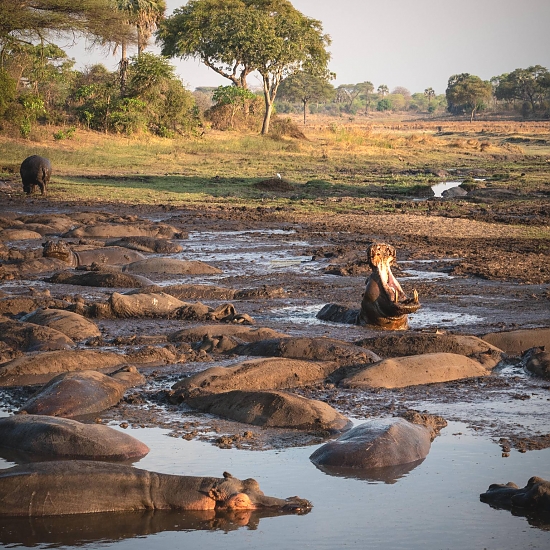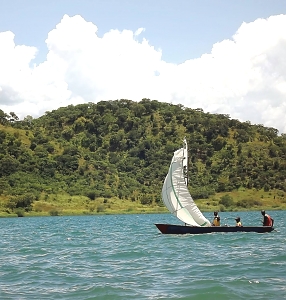Katavi National Park
Katavi National Park
It offers un-spoilt wildlife viewing in the country’s third-largest national park, in a remote location far off the beaten track. The national park is Africa at its most wild — unadulterated bush settings, spectacular views, and rich wildlife.
Tanzania’s third largest national park; it lies in the remote area southwest of the country, within a truncated arm of the Rift Valley that terminates in the shallow, brooding expanse of Lake Rukwa. The wilderness of Katavi National Park, located in the western area of Tanzania, is one of the most untouched areas in the entire country.
Katavi’s dramatic scenery is as varied as it is pristine. Flood plains of thick reeds and dense waterways are home to a huge population of hippo and varied birdlife. In the woodlands to the west, forest canopies shroud herds of buffaloes and elephants. Seasonal lakes fill with dirty coloured water after the rains and animals from all corners of the park descend in them to drink. The park is also home to the rare roan and sable antelope species, and it is a must-see for the visitors intending to explore the wilds of the continent.
The bulk of Katavi supports a hypnotically featureless cover of tangled brachystegia woodland, home to substantial but elusive populations of the localised eland, sable and roan antelopes. Nevertheless the main focus for game viewing within the park is the Katuma River and associated floodplains such as the seasonal Lakes Katavi and Chada. During the rainy season, these lush, marshy lakes are a haven for myriad water birds, and they also support Tanzania’s densest concentrations of hippos and crocodiles.
Katavi’s most singular wildlife spectacle is provided by its hippos. Towards the end of the dry season, up to 200 individuals might flop together in any riverine pool of sufficient depth. And as more hippos gather in one place, so does male rivalry heat up – bloody territorial fights are an everyday incident, with the vanquished male forced to lurk hapless on the open plains until it gathers sufficient confidence to mount another challenge.
FAQs
Katavi National Park
Katavi National Park can be visited all year round. During the drier months (May to October and December to February), the animals congregate around the remaining water bodies and can be reached easily. During the wetter months, the extensive wetlands offer splendid scenery to adventurous visitors.
It is during the dry season, when the floodwaters retreat, that Katavi truly comes into life. The Katuma, reduced to a shallow muddy trickle, forms the only source of drinking water for miles around, and the flanking floodplains support game concentrations that defy belief. An estimated 4,000 elephants might converge on the area, together with several herds of 1,000-plus buffalo, while an abundance of giraffes, zebras, impalas and reedbucks provide easy pickings for the numerous lion prides and spotted hyena clans whose territories converge on the floodplains.
By Air: Several companies like Zantas air, Safari air link (SAL) arrange charter flight from Dar es Salam, Mwanza or Arusha cities to either Mpanda airport which is located in Mpanda town or to Sitalike and Ikuu airstrips inside the park. Usually every Monday and Thursday. Coastal Aviation Charted flight within the park Ikuu airstrips.
By Road: From either Dar es Salaam via Mbeya (1513Km), Dar es Salaam via Tabora (1392km), Arusha via Tabora (1015.7km) or Mwanza via Tabora-Inyonga (741 km).
By Rail: It is also possible to reach Mpanda by train from Dar es Salaam via Tabora then catch a public transport to Sitalike, where game drives can be arranged.
Destinations near Katavi National Park
These nearby destinations have a lot to offer








